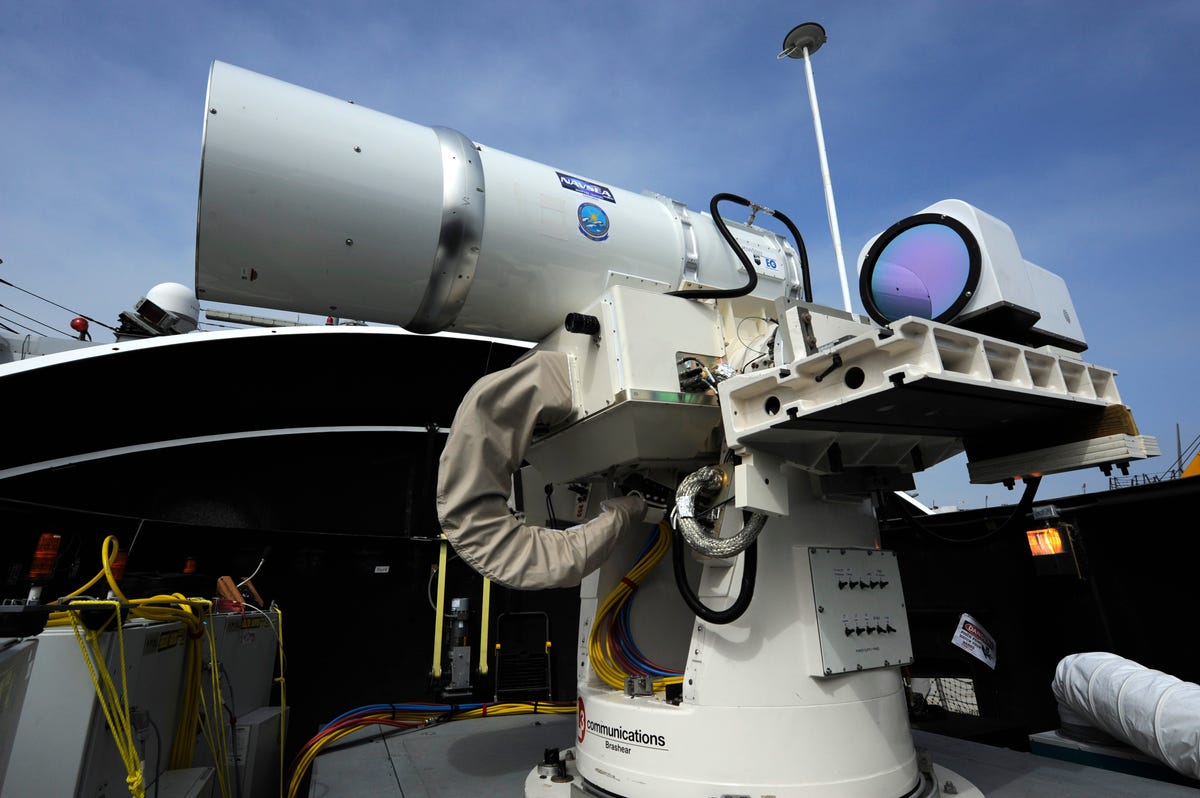2014's military tech: lasers, drones, and more (pictures)
The Pentagon will be busy on all fronts with newfangled technology, from directed-energy weapons to autonomous aircraft and from 3D printing to cyberdefense.

Gunning for laser weapons
We're especially keen on seeing what the Defense Department can deliver in the category of directed-energy weapons -- a rather bland and bureaucratic term for that staple of sci-fi cinema, ray guns. For all the money that the military-industrial complex has thrown at the problem, we're still a long way off from phasers and photon torpedoes, but ever so slowly, we do see small gains -- or at least flashy demonstrations. One such moment in the coming year should materialize from the US Navy's Laser Weapon System, or LAWS, a solid-state system that will be installed on the USS Ponce, a former amphibious transport ship that the Navy has reclassified as its first Afloat Forward Staging Base (Interim), for deployment to the Persian Gulf "in fiscal year 2014" -- that is, by October 1.
The Laser Weapon System (LaWS), a technology demonstrator, in a temporary installation aboard the guided-missile destroyer USS Dewey (DDG 105), from July 2012.
Lockheed gets UCLASS-y
XM-25, minus the X
WIN-T for battlefield networking
The photo here shows a WIN-T satellite terminal in between a pair of truck-based WIN-T communications nodes in a training exercise at Fort Drum, NY, in April 2013.
B-52 goes digital
Said Alan Williams, the deputy program element monitor at Air Force Global Strike Command: "It is taking the B-52 from a rotary-dial phone to a smartphone."
KC-46A boom
Tumblehome Zumwalt
24th Air Force cyber ops
AM General JLTV prototype
Among other features, the JLTV is intended to be of an open "plug and play" nature that will allow for the installation of future networking gear and other electronic devices without a vehicle redesign.
3D printing at Picatinny
3D printing could also simplify and speed up the manufacture of wings for small drones, or UAVs, with the electronics, antennas and sensors embedded.

